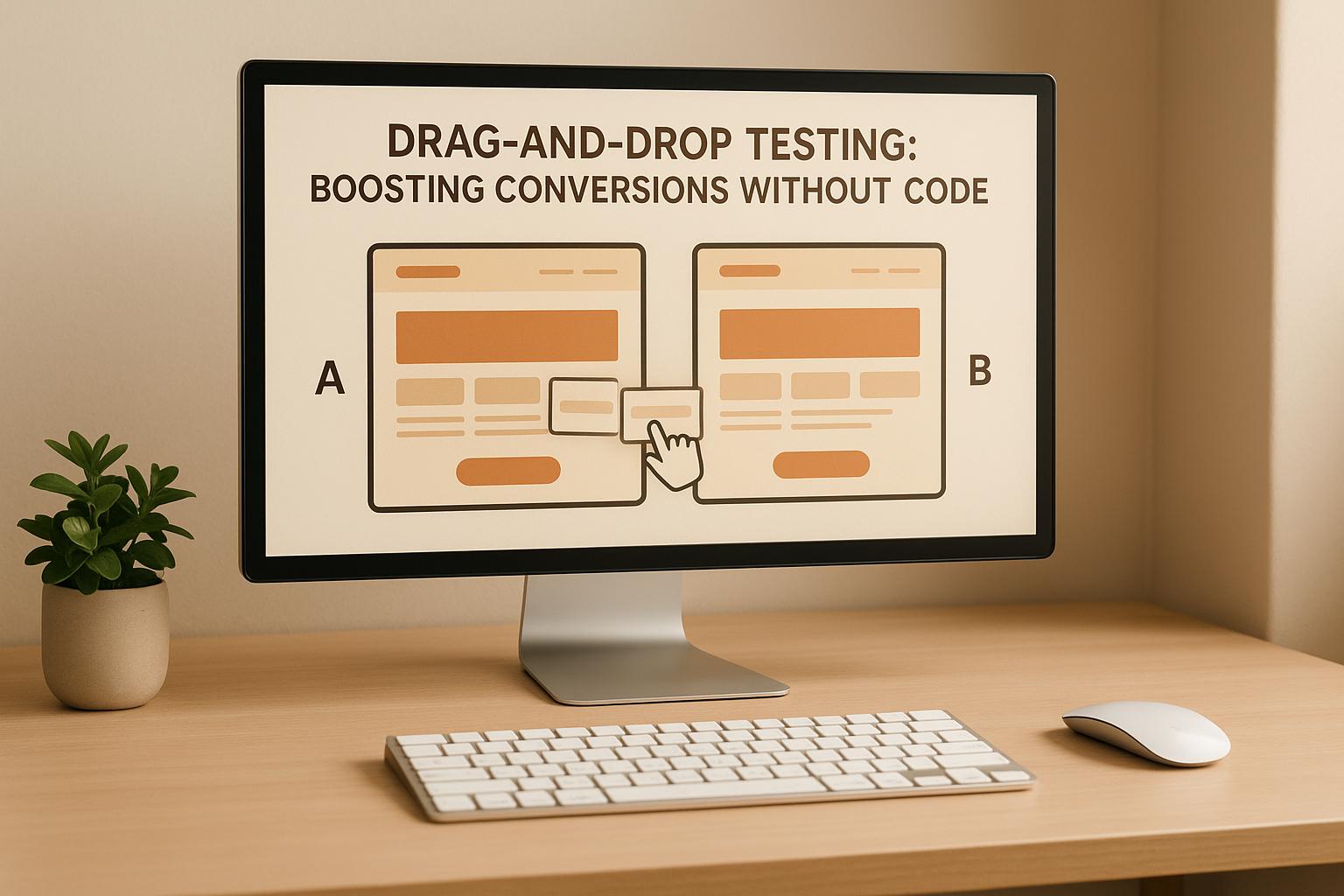

Ultimate Guide to Third-Party Script Monitoring

Ultimate Guide to Third-Party Script Monitoring
 01-11-2025 (Last modified: 01-11-2025)
01-11-2025 (Last modified: 01-11-2025)
Third-party scripts can improve website functionality but often introduce performance, security, and compliance risks. Monitoring these scripts helps avoid slow load times, data breaches, and privacy violations. Research shows that third-party scripts cause 60-70% of performance issues and increase page load time by 30% on unmonitored sites. Tools like DebugBear and Lighthouse can track script behavior, while security measures like Content Security Policy (CSP) and Subresource Integrity (SRI) reduce vulnerabilities. Regular audits and automated monitoring ensure scripts remain efficient and safe, protecting user experience and revenue.
Key takeaways:
- Performance risks: Scripts can slow down websites, with ad scripts adding 0.5 seconds or more to load times.
- Security risks: Vulnerabilities in scripts can lead to costly breaches, averaging $4.45 million in damages.
- Compliance risks: Third-party scripts may violate regulations like GDPR or CCPA if not monitored.
- Solutions: Use tools for real-time tracking, create a script inventory, and implement security controls.
Monitoring ensures websites stay fast, secure, and compliant while maintaining a smooth user experience.
SE Radio 642: Simon Wijckmans on Third-Party Browser Script Security
Key Features of Script Monitoring Tools
Picking the right script monitoring tool can be a game-changer for identifying issues early and avoiding expensive performance or security mishaps. The top tools share a handful of essential features that work together to keep your website both efficient and secure.
Complete Script Inventory
At the heart of effective monitoring lies a complete script inventory. This feature automatically logs every third-party script, including its source, version, and any changes. Tools like Hoverify and Chrome DevTools make it easy to filter and list external JavaScript requests, while platforms like DebugBear go a step further, offering continuous tracking and notifications for new or updated scripts. Keeping an updated inventory doesn’t just streamline monitoring – it also helps weed out unnecessary or outdated scripts that could be slowing down your site. This inventory acts as the backbone for other monitoring activities, like real-time behavior tracking.
Real-Time Behavior Tracking
Real-time behavior tracking doesn’t just count scripts – it analyzes their actions to catch performance or security issues as they happen. This feature monitors things like CPU usage, network requests, and changes to the DOM, flagging anything unusual. For instance, tools like Lighthouse and WebPageTest can identify scripts causing significant delays. More advanced platforms use behavioral baselining, which learns the typical behavior of a script and alerts you if something changes. Imagine a script that usually uses minimal CPU suddenly spiking in resource consumption – this would trigger an alert. These insights help teams respond quickly, minimizing downtime or risks.
Alerts and Compliance Reports
Building on real-time tracking, alerts and compliance reports are crucial for swift action and meeting regulatory standards. Advanced monitoring tools can send notifications via email, SMS, or even integrate with incident management systems to keep your team informed. Alerts can be customized for different scenarios, such as performance drops (like increased CPU usage or slower page loads), security threats (like unauthorized data access), or the introduction of new scripts that may pose compliance risks.
Compliance reports, on the other hand, provide a detailed record of your script inventory and any issues addressed. These reports are especially useful for audits, like those required for PCI DSS compliance. Many modern tools now incorporate AI-driven analysis, which reduces false alarms and speeds up response times. These AI capabilities can also predict potential problems based on historical data and prioritize alerts based on their potential impact.
For added insight, tools like PageTest.AI can complement your monitoring efforts by showing how third-party scripts influence user experience, offering valuable data for improving conversion rates.
Best Practices for Script Monitoring
Managing third-party scripts effectively means striking the right balance between functionality, security, and performance. By sticking to proven methods, organizations can significantly cut down risks while keeping their websites running smoothly.
Regular Script Audits
Conducting quarterly script audits is a cornerstone of efficient script management. These reviews help pinpoint scripts that are outdated, redundant, or resource-heavy. The process starts with creating a detailed inventory using automation tools to categorize scripts by their purpose – such as analytics, marketing, social media, or customer support.
During these audits, focus on analyzing how each script impacts performance. If a script consumes too many resources or fails to engage users, it’s time to consider removing it. A/B testing can help weigh the script’s value against its performance cost. For instance, in Q2 2024, a major US retailer introduced quarterly script audits and automated monitoring using New Relic. This initiative led to a 35% drop in security incidents tied to third-party scripts and a 20% improvement in page load times. Additionally, reviewing whether each script still serves a business purpose and eliminating outdated ones enhances both performance and security. Once the script list is optimized, the next step is to strengthen security measures.
Security Controls Implementation
Strong security controls are vital for protecting third-party scripts. A Content Security Policy (CSP) helps by restricting which domains can serve scripts to your site, essentially creating a whitelist of trusted sources and blocking unauthorized scripts. Alongside CSP, Subresource Integrity (SRI) ensures that browsers only execute scripts whose content matches a predefined cryptographic hash, preventing tampering during transmission.
These tools, combined with enforcing HTTPS for all script sources and routinely reviewing script permissions, create multiple layers of protection. This is especially important given that over 60% of data breaches in 2024 were linked to vulnerabilities in third-party components, including scripts.
Automated Monitoring Setup
While audits and security measures are essential, continuous monitoring provides an extra layer of protection. Automated monitoring tools excel at detecting issues in real time – far beyond what manual checks can achieve. These systems send alerts for performance drops, unauthorized script changes, or compliance issues, enabling swift action before problems affect users.
Data shows that websites using automated monitoring tools have reduced incident response times by 40%. To get the most out of these tools, customize alert thresholds based on historical data and use multi-metric triggers like load time, error rates, and CPU usage. This approach minimizes false alarms and ensures genuine issues are flagged quickly.
Integrating monitoring tools with incident management platforms, CI/CD pipelines, and regular code reviews further streamlines response efforts. For those focused on improving conversion rates, platforms like PageTest.AI can analyze how third-party scripts influence user engagement and conversions. Regularly reviewing and fine-tuning alert settings ensures that monitoring keeps pace with your site’s changing needs and goals.
sbb-itb-6e49fcd
How to Set Up Script Monitoring
Setting up third-party script monitoring effectively calls for a structured plan that ensures your website stays fast and secure. Here are three essential steps to build a reliable monitoring system:
Creating a Script Inventory
Start by pinpointing all external JavaScript files on your site. Use tools like Chrome DevTools (filtering the Network tab for JavaScript) or automate the process with software like Hoverify. For each script, document the following details:
- Source URL
- Provider name
- Business purpose
- Loading method (synchronous or asynchronous)
Group the scripts by their function – whether they’re for analytics, marketing, social media, customer support, or advertising. This categorization helps prioritize which scripts need closer monitoring. Keep this inventory centralized so it’s accessible to everyone involved. Add any notes about past performance issues or changes made during previous audits for easy reference.
Setting Up Monitoring Tools
Once your inventory is ready, the next step is continuous performance tracking. Tools like Chrome DevTools, Lighthouse, and WebPageTest can measure execution times, network requests, and resource usage. Set performance budgets that trigger alerts when thresholds are crossed. For automated, long-term monitoring, platforms like DebugBear and SpeedCurve offer features like historical data tracking and customizable alerts.
Visual tools like time series charts are great for spotting gradual performance dips you might otherwise miss. Test your monitoring setup by simulating resource failures to confirm that alerts work as intended.
Here’s a quick comparison of some popular tools for script monitoring:
| Tool | Best For | Price (USD) |
|---|---|---|
| Better Stack | API monitoring, log management | $0.17–$0.50 per monitor |
| Datadog | Synthetic monitoring, infrastructure, APM | $5 per 10,000 test runs |
| Sematext Synthetics | Synthetic monitoring, real user monitoring | $2/HTTP, $7/browser monitor |
| Dynatrace | API monitoring, logs, metrics | $0.001 per synthetic run |
Workflow Integration
Now that you’ve set up monitoring, it’s time to integrate these tools into your daily workflow. Many platforms allow you to connect with tools like Slack, email, or custom dashboards to ensure notifications are sent directly to the right team members when performance issues arise. This automation speeds up incident response and helps manage problems before they affect users.
Consider using multi-metric triggers that look at load time, error rates, and CPU usage together. This reduces false alarms and ensures genuine issues are flagged immediately. Research shows that teams using automated monitoring tools have cut response times by 40%.
Integrating these alerts with your incident management and CI/CD workflows ensures that any performance issues are addressed quickly and effectively. For example, when a script problem is detected, automated workflows can create incident tickets, notify teams, and even trigger rollbacks.
For businesses focused on conversion rates, platforms like PageTest.AI can add another layer of insight. These tools analyze how third-party scripts impact user engagement and conversions, offering data-driven recommendations without requiring manual coding.
Lastly, don’t forget to regularly review and adjust your alert settings. As your website evolves, so should your monitoring configuration. A well-maintained system ensures your website stays fast, secure, and user-friendly.
Performance Metrics and Optimization
To enhance site speed and improve user experience, it’s essential to dive into performance data. These metrics not only influence how users interact with your site but also play a role in determining search rankings. A key focus here is on Core Web Vitals, which directly measure user experience.
Core Web Vitals Impact
Core Web Vitals consist of three key metrics: Largest Contentful Paint (LCP), First Input Delay (FID), and Cumulative Layout Shift (CLS). Each of these highlights a critical aspect of user experience:
- LCP measures how quickly the main content of a page loads.
- FID evaluates the time it takes for a page to respond to user interactions.
- CLS tracks unexpected layout shifts, which can be frustrating for users.
Third-party scripts are often the culprits behind poor performance in these areas. For instance, they can delay LCP by blocking rendering, overload the main thread and worsen FID, or disrupt CLS by adding late-loading elements like ads or social widgets. To mitigate these issues, aim to keep main thread blocking under 50ms per script and total script execution time below 250ms, adhering to Core Web Vitals benchmarks.
Here’s an example: A website identified an ad script that blocked the main thread for over 200ms. By using tools like Lighthouse and WebPageTest, the script was replaced, leading to noticeable improvements in both FID and LCP.
Script Performance Troubleshooting
When performance problems arise, diagnostic tools are your best friends. They help pinpoint resource-heavy scripts by analyzing load times, execution durations, and main thread blocking. Start by filtering JavaScript resources to identify the most resource-intensive scripts. Then, evaluate their impact under different network conditions.
Once you’ve identified problematic scripts, you have several options:
- Remove scripts that aren’t essential.
- Defer loading until after critical content has appeared.
- Load scripts asynchronously.
- Work with third-party providers to set performance budgets.
For example, deferring non-critical scripts has been shown to significantly reduce load times, especially on mobile networks. Additionally, advanced AI tools can fine-tune these optimizations, improving both technical performance and user experience.
AI-Powered Analysis
AI tools take performance analysis to the next level by automating the troubleshooting process and offering actionable insights. Platforms like Dynatrace use AI-driven root cause analysis to identify problematic scripts and suggest fixes, cutting down on manual effort.
Unlike traditional tools that focus solely on technical metrics, AI-powered platforms such as PageTest.AI provide a broader perspective. They assess user engagement and conversions, making it easier to understand how site changes impact the overall user experience. With its no-code approach, PageTest.AI enables A/B and multivariate testing of website elements, helping you optimize configurations effectively.
Key Takeaways for Script Monitoring
Keeping a close eye on third-party scripts is crucial for maintaining website performance, security, and compliance with regulations. Unchecked scripts can slow down your site significantly – just one analytics or ad script can add 0.5 seconds or more to load times, which may hurt user experience and revenue.
By actively monitoring these scripts, you can ensure your website runs smoothly, stays protected from potential security threats, and adheres to regulations like GDPR and CCPA. Third-party scripts are often a source of performance issues and a common target for supply chain attacks.
Start by maintaining a detailed inventory of all scripts on your site and conducting regular audits to identify and remove outdated or risky ones. As your website grows and changes, keep this inventory up to date.
Real-time monitoring, paired with automated alerts, allows your team to address problems before they affect users or revenue. These alerts, combined with detailed reports, enable quicker resolutions and minimize downtime.
On top of real-time monitoring, advanced analytics can take your oversight to the next level. AI-powered tools are changing the game by automating anomaly detection and providing actionable insights for optimization. For example, platforms like PageTest.AI use AI to test and refine website elements, track user engagement, and offer insights to boost conversion rates and script efficiency – all without requiring code changes.
To safeguard your site, implement security measures like sub-resource integrity, Content Security Policy, and sandboxing. These controls help prevent cross-site scripting, data leaks, and unauthorized data collection. When combined with robust monitoring, they form a strong defense strategy.
Many organizations successfully integrate third-party script management into their workflows by embedding monitoring into their DevOps and CI/CD pipelines. This ensures consistent script quality and reliability as websites scale. It also fosters better collaboration across teams.
Speaking of collaboration, involving multiple departments – like development, security, and marketing – strengthens your monitoring strategy. Each team offers valuable insights into script functionality, performance needs, and security risks. This cross-team effort not only improves monitoring practices but also helps in negotiating better deals with vendors.
FAQs
How can I use third-party scripts to improve my website without compromising performance or security?
To make the most of third-party scripts without compromising your website, focus on keeping things secure and maintaining strong performance. Stick to using only the scripts that are truly necessary to improve functionality, and ensure they come from reliable, well-known sources. Regular audits and monitoring can help you catch any issues, like a script slowing down your site or creating security gaps.
Use tools that provide real-time monitoring to see how scripts affect load times and the overall user experience. On top of that, implement Content Security Policies (CSPs) to block unauthorized scripts from running, and apply subresource integrity (SRI) to confirm that scripts haven’t been tampered with. Staying proactive lets you strike the right balance between functionality, speed, and security.
How can I set up an automated system to monitor third-party scripts on my website?
To establish an automated system for keeping an eye on third-party scripts on your website, start by embedding a monitoring tag or snippet into your site’s code. You can add this directly to the HTML or use a tag management tool for easier implementation. Set up real-time alerts to get notified immediately if a script fails or behaves unusually, so you can address any issues without delay.
Leverage AI-powered tools to automatically evaluate script performance and user interactions. These tools can pinpoint inefficiencies or problems, saving you from having to manually analyze data. It’s also a good idea to schedule regular automated checks to ensure the scripts remain functional and to fine-tune performance based on the insights gathered. Lastly, maintain an up-to-date log of all third-party scripts and their current status. This will make it easier to manage and monitor them as your website grows and changes.
How do AI-powered tools make it easier to detect and fix issues with third-party scripts?
AI-powered tools make it easier to spot and fix issues with third-party scripts by automatically analyzing user behavior in real time – things like clicks, scrolls, and time spent on a page. These tools can pinpoint problematic scripts faster and with greater precision compared to traditional manual approaches.
They also take the hassle out of manual coding by simplifying the process of creating optimized content variations and tracking performance metrics. The result? Faster fixes, a smoother user experience, and improved website performance – all while saving time and effort.
Related Blog Posts
say hello to easy Content Testing
try PageTest.AI tool for free
Start making the most of your websites traffic and optimize your content and CTAs.
Related Posts

 30-10-2025
30-10-2025
 Ian Naylor
Ian Naylor
Scroll Maps for UX and CRO
Explore how scroll maps enhance user experience and boost conversions by revealing user behavior on your website.

 28-10-2025
28-10-2025
 Ian Naylor
Ian Naylor
Why Visual Stability Matters for Conversions
Learn how visual stability impacts user experience and conversions, and discover strategies to reduce layout shifts on your website.

 27-10-2025
27-10-2025
 Ian Naylor
Ian Naylor
Drag-and-Drop Testing: Boosting Conversions Without Code
Easily boost your website’s conversions with no-code drag-and-drop testing tools that simplify A/B testing and enhance team collaboration.
